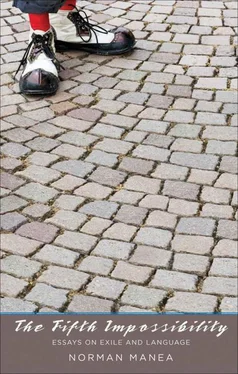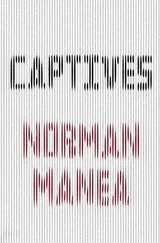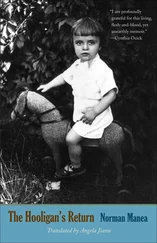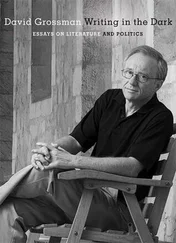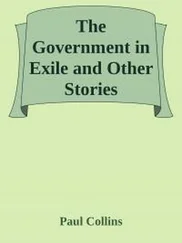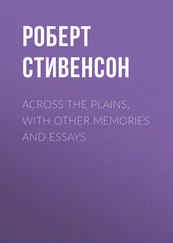*Now published as Journal, 1935–1944 (2000), trans. Patrick Camiller, with an introduction by Radu Ioanid.
In poignant sequences that are not easily forgotten, Sebastian dwells on the gradations of this “machinery” of brutalization, and on the historical context in which it developed. Today, more than half a century after it was written, this journal stands as one of the most important human and literary documents of the pre-Holocaust climate in Romania and Eastern Europe, of the conditions in which the Judeocide could be unleashed.
Mihail Sebastian (this was the pen name of Joseph Hechter) was born in 1907, to a middle-class Jewish family, in the Danube port of Bráila, a town that he always loved; and he died in an accident in the spring of 1945, less than a year after Soviet troops entered Romania. (He was rushing to give the opening lecture on Balzac at the newly opened Popular (Free) University in Bucharest, and was run over by a truck. Recently, some people have tried to connect the accident to Sebastian’s resignation from the communist paper România Liberá, for which he wrote briefly in 1944.) During the interwar period, Sebastian was well known for his lyrical and ironic plays ( Star without a Name, Let’s Play Vacation, and The Last Hour ), as well as for urbane psychological novels tinged with melancholy ( Women, The Town with Acacia Trees, The Accident ), and his extraordinary literary essays.
Sebastian’s activity as a journalist centered on the conservative paper Cuvîntul, which was edited by Nae Ionescu (no relation of the playwright), and this often set him at loggerheads with both the leftwing press and the Jewish press. Nae Ionescu was a lively minor thinker preoccupied with metaphysics, logic, and religion. He never wrote an important work. He was, rather, a charismatic figure — a kind of guru — for young Romanian intellectuals between 1922 and 1940. He ended up as a supporter of the extremely right-wing, extremely nationalistic “Christian-orthodox” Iron Guard movement. Many years later, in 1967, Mircea Eliade bizarrely included Nae Ionescu in the Encyclopedia of Philosophy, and wrote this about his mentor: “God, for Nae Ionescu, is present in history through the Incarnation … man’s mode of being is completely fulfilled only through death, death is above all transcendent.” A Romanian reader will recognize in Eliade’s words more than a strictly academic evaluation.
Sebastian’s Journal begins in 1935, when Nazi Germany was flexing its muscles, and anti-Semitism was rife; the danger of war was growing more acute. Indeed, a year earlier Sebastian had provoked a hue and cry with his novel De douá mii de ani (For Two Thousand Years). Written in the form of a pseudo-diary, and somewhat in the style of André Gide, the novel portrays the identity crisis of its protagonist, a young Jewish intellectual in Romania, in a period when the country itself is undergoing the crisis of modernity. The firstperson, nameless narrator, an architect by profession, records his apprenticeship years of friendship, love, and culture, but also the shock of his encounter with Romanian anti-Semitism.
Sebastian’s characters include the mesmerizing professor Ghita Blidaru, a sharp and passionate critic of modern values (modeled on Nae Ionescu), the nihilist Párlea (modeled on Cioran), the “Europeanist” architect Vieru, the Zionist Sami Winkler, the Jewish Marxist S.T. Haim (modeled on Bellu Zilber, a peculiar member of the then-illegal Romanian Communist Party), the Yiddishist Abraham Sulitzer, and the British businessman Ralph T. Rice. The last lines of the novel express the protagonist’s breakthrough into a feeling of resignation. Is he a Romanian? Is he a Jew? Who, precisely, is he? As he gazes at the villa that he designed and built for his “native Romanian” mentor Blidaru, he no longer seems to care about the search for roots. He experiences a moment of serene separation. He accepts with equanimity the two-thousand-year-old heritage of the outsider. A house where its wanderer-builder always wished himself to be: “simple, clean, and calm, with an even heart, opened to all seasons.”
Sebastian’s novel is set against the background of an anti-Semitism that had not yet taken the extreme form of the “Final Solution.” But the catastrophe was rooted in what preceded it, as is suggested by Ionescu’s preface to Sebastian’s novel. Sebastian had asked Nae Ionescu to write the preface in 1931, when he started work on the book. Ionescu had guided Sebastian’s early steps in journalism. As a professor of philosophy of religion and a scholar of the Old Testament, he had a good knowledge of Judaism. Though Ionescu was politically committed to the right, he had a few years earlier rejected “the theory of the national state” with all its “police-type absurdities.”
By the time Sebastian finished his novel, however, Europe had already lurched violently to the right. In Romania it was not just an “anti-Semitic” year, it was, as Sebastian put it, a “hooligan year.” And in keeping with the political weather, Nae Ionescu had become one of the ideologues of the Iron Guard, also known as the Legion, the right-wing extremist organization that deployed anti-Semitism as a major political weapon within a kind of terroristic Orthodox Christian fundamentalism.
In 1934, still believing in his old friend’s loyalty of “conscience,” Sebastian gallantly repeated his request for Ionescu’s endorsement of his book, and his former mentor, now a “Legionary Socrates,” respected the promise he had made. He wrote the preface. And the words with which Sebastian expressed his shock on reading the preface have been conveyed by Eliade in his memoirs: “Nae gave me the preface. A tragedy, a real death sentence!” This was no exaggeration.
Nae Ionescu’s preface argued that Jewish and Christian values are essentially irreconcilable. The really virulent language comes at the end, when the Jewish-Christian conflict is seen as soluble only through the disappearance of its cause, the Jews. The Iron Guard ideologue provided a definition of Romanian identity: “We are Orthodox Christian because we are Romanian, and Romanian because we are Orthodox.” This was not a new definition; prestigious intellectuals had already espoused it. What was especially dramatic, and especially dangerous, was the historical context in which these inflammatory pronouncements now appeared.
Especially hard to forget was the part of Nae Ionescu’s preface in which “Judah,” having “refused to recognize Christ the Messiah,” was declared an essential, irreducible enemy, a “dissolver of Christian values.” The indictment was total, unconditional:
It suffers because it gave birth to Christ, beheld him and did not believe …. Judah suffers because it is Judah …. Iosif Hechter, you are sick. You are sick to the core because all you can do is suffer …. The Messiah has come, Iosif Hechter, and you have had no knowledge of him …. Or you have not seen, because pride put scales over your eyes …. Iosif Hechter, do you not feel that cold and darkness are enfolding you?
The writer of the novel that was being introduced was not referred to as Sebastian, but as Hechter, as “Judah.”
Thus the hooligan year 1934 was given a hooligan scandal. At the time, it seemed to some commentators that Sebastian’s willingness to allow this incitement to genocide to appear at the front of his “Jewish” novel was perverse and cowardly. Assailed by fascists and Marxists, Christians and Jews, liberals and extremists, Sebastian replied with an essay, “How I Became a Hooligan,” which appeared in 1935, the year in which his Journal begins. He wrote that anti-Semitism, which “channels toward Jews the hate-filled distractions of organisms in crisis,” was nonetheless “on the periphery of Jewish suffering.” In 1935, he still had a certain condescension toward external adversity, seeing it as minor or rudimentary in comparison with the ardent “internal adversity” that besets the Jews.
Читать дальше
